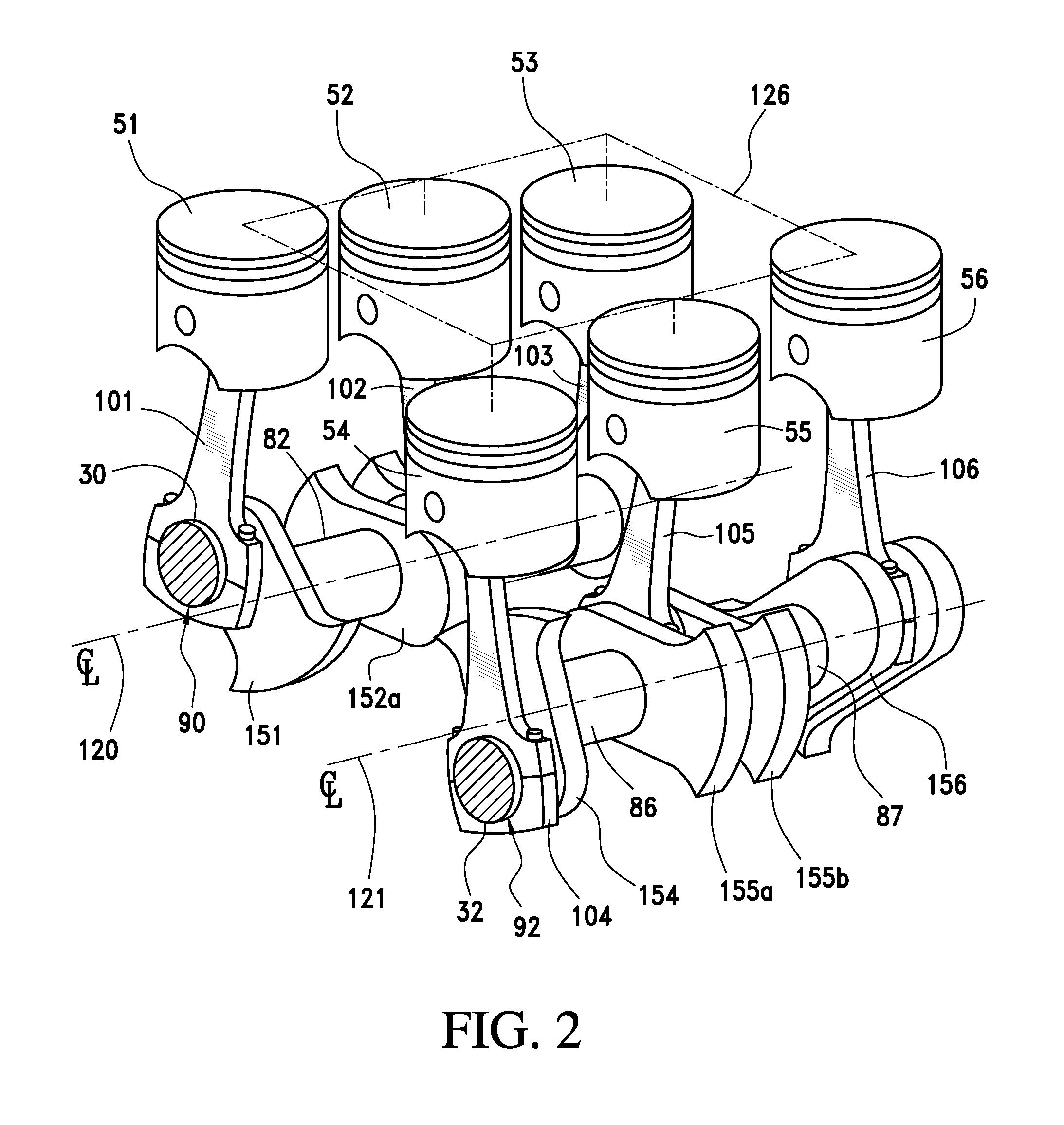Dual crankshaft engine with counter rotating inertial masses
- Summary
- Abstract
- Description
- Claims
- Application Information
AI Technical Summary
Benefits of technology
Problems solved by technology
Method used
Image
Examples
Embodiment Construction
[0020]With initial reference to FIG. 1, there is shown an automotive vehicle 10 having a body 11 and a dual crankshaft engine 12. The engine 12 is preferably attached to a first mass 14, having an associated inertia such as motor / generator or a starter motor. The engine 12 is also attached to a second mass 16, having an associated inertia, such as torque converter or a flywheel. The rotational inertia of the first mass 14 is preferably the same as the rotational inertia of the second mass 16. Power from the engine 12 is transmitted through the flywheel or torque converter to a transmission 18, then to the other portions of a powertrain 20 and eventually drives wheels 22.
[0021]In FIG. 1, the vehicle 10 is shown as a rear wheel drive vehicle but, as will become readily apparent from the discussion below, any type of powertrain arrangement, including a front wheel or all wheel drive, could be used. At this point, it should be readily recognized that a flywheel would be commonly used as...
PUM
 Login to View More
Login to View More Abstract
Description
Claims
Application Information
 Login to View More
Login to View More - R&D
- Intellectual Property
- Life Sciences
- Materials
- Tech Scout
- Unparalleled Data Quality
- Higher Quality Content
- 60% Fewer Hallucinations
Browse by: Latest US Patents, China's latest patents, Technical Efficacy Thesaurus, Application Domain, Technology Topic, Popular Technical Reports.
© 2025 PatSnap. All rights reserved.Legal|Privacy policy|Modern Slavery Act Transparency Statement|Sitemap|About US| Contact US: help@patsnap.com



